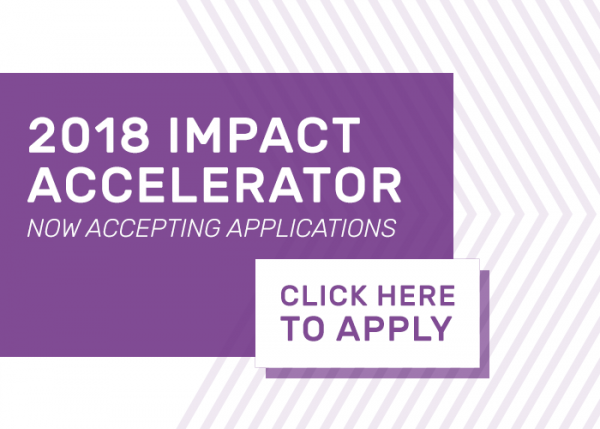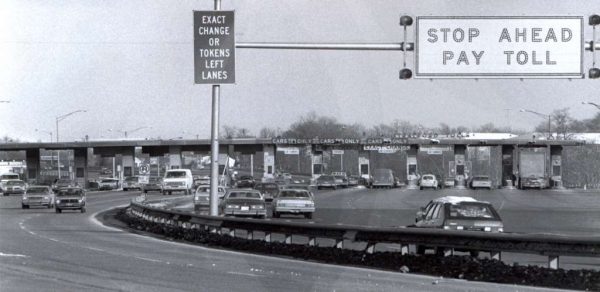State Branding Drives Tourism, Economic Development Goals
/As Connecticut suffers through budget deficits, cuts in spending and services, and high-profile departures of leading businesses, states nearby are advancing economic development branding and marketing strategies to retain and attract business, according to a new report by the state legislature’s Office of Legislative Research.
“As competition among states increases, economic development organizations (EDOs) continue to develop plans and campaigns to brand and market their states as great places to live, work, visit, and do business,” the report observes. “However, the effectiveness of such campaigns is mixed, often reflecting the authenticity of the message and the extent to which it reaches targeted audiences.”
Effective branding efforts can drive business recruitment and development efforts and change perceptions of a state, the report noted. It provides examples of marketing efforts in several states, including Florida, Louisiana, Maryland, New York, North Dakota, Rhode Island, Vermont, and Wisconsin.
The report, issued last week, describes branding as the message an organization is trying to convey, and marketing as the tools and tactics used to deliver that message.
 According to the 17-page report, Tennessee’s “Mastered in Tennessee” branding effort is cited by several industry groups as an example of effective state branding. The campaign highlights Tennessee’s unique competitive advantages and demonstrates why it is a great place to live and work.
According to the 17-page report, Tennessee’s “Mastered in Tennessee” branding effort is cited by several industry groups as an example of effective state branding. The campaign highlights Tennessee’s unique competitive advantages and demonstrates why it is a great place to live and work.
Michigan provides an example of how tourism branding can also serve economic development goals. The campaign, “Pure Michigan,” was designed to create an emotional brand that resonated with families and drew attention to the state’s vast, unspoiled beauty. It is widely regarded as successful among marketing and tourism professionals, with Forbes naming it the sixth-most successful tourism campaign of all time.
Greater Rhode Island Economic Development Partnership recently launched a campaign to market Rhode Island as a hub of entrepreneurship and challenge negative perceptions of the state. Greater Rhode Island developed a new website, which saw a 122% increase in web traffic, 68% increase in engagement on the site, and a 288% increase in the time users spend on the site.
Many in Connecticut are familiar with New York’s “Start Up NY” campaign, which aired many commercials in Connecticut markets, the report indicated. The campaign marketed a host of economic development incentives available to businesses that relocate to or expand in New York.
Vermont recently launched a digital ambassador campaign as part of its three-year marketing plan launched in 2016. According to the plan, the campaign uses business and community leaders, entrepreneurs, and other Vermont-loving influencers to share business announcements, national media placements, and other information that reflects well on Vermont as a great place to live, work, start and grow a business, and raise a family.
The report did not include a review or analysis of Connecticut’s branding efforts. In 2012, Connecticut launched a two-year, $27 million marketing campaign to promote tourism and brand the state as “still revolutionary.” The state spent $500,000 on its new logo and other creative materials, with most of the remainder of the two-year budget going to the placement of ads on television, radio, billboards and social media, according to published reports. It also created a new website, ctvisit.com.
 Two years later, the state announced plans to spend $3.4 million to promote Connecticut tourism ahead of the summer travel season within the state and to audiences in New York, Rhode Island and western Massachusetts. And last year, the state’s tourism website was re-launched with a new look for the first time in a decade.
Two years later, the state announced plans to spend $3.4 million to promote Connecticut tourism ahead of the summer travel season within the state and to audiences in New York, Rhode Island and western Massachusetts. And last year, the state’s tourism website was re-launched with a new look for the first time in a decade.
A study prepared for the state, “The Economic Impact of Travel in Connecticut,” released in March, 2017, found that the state’s tourism industry generated $14.7 billion in total business sales in 2015, a 4.6 percent increase over 2013. During the same period, tourism employment grew 2 percent, supplying 82,688 jobs in 2015, the fifth straight year it generated more jobs than the year before, according to the study.
The state’s recently adopted two-year budget includes $6.4 million for statewide tourism marketing in 2017-18 and $4.1 million for 2018-19, according to published reports. The slogan “Still Revolutionary” remains in place.






 Henkel is #158 on Forbes magazine’s Global 2000 list of Top Multinational Performers, and #307 on the list of America’s Best Employers. Charter Communications is #38 on the Forbes list of Growth Champions and ranks #107 on the Global 2000.
Henkel is #158 on Forbes magazine’s Global 2000 list of Top Multinational Performers, and #307 on the list of America’s Best Employers. Charter Communications is #38 on the Forbes list of Growth Champions and ranks #107 on the Global 2000.
 Most Connecticut residents may also be unfamiliar with Charter Communications. Connecticut has 24 cable franchise areas; Charter provides local cable service in only three of them, in the western and northeastern regions of the state for about 35 mostly rural communities. The larger franchise owners in Connecticut are Cablevision, Comcast and Cox. But the Connecticut map is deceiving – nationally Charter is the second largest cable provider in the nation.
Most Connecticut residents may also be unfamiliar with Charter Communications. Connecticut has 24 cable franchise areas; Charter provides local cable service in only three of them, in the western and northeastern regions of the state for about 35 mostly rural communities. The larger franchise owners in Connecticut are Cablevision, Comcast and Cox. But the Connecticut map is deceiving – nationally Charter is the second largest cable provider in the nation.
 The 21 honorees were selected by economic development officials in each of 10 regions across Connecticut for their contribution to the state’s economy – such as consistent or growing employment levels, playing a critical role in changing the character of its community or civic engagement, strong public/private collaboration to encourage new investment, or leadership resulting in growth or improvements.
The 21 honorees were selected by economic development officials in each of 10 regions across Connecticut for their contribution to the state’s economy – such as consistent or growing employment levels, playing a critical role in changing the character of its community or civic engagement, strong public/private collaboration to encourage new investment, or leadership resulting in growth or improvements.


 Sitrep, based in Cheshire, was founded in 2014 to “develop monitoring systems that are intuitively usable.” Principals are Harland Christofferson, Gary Martin and Michael Byrne.
Sitrep, based in Cheshire, was founded in 2014 to “develop monitoring systems that are intuitively usable.” Principals are Harland Christofferson, Gary Martin and Michael Byrne. The mission of Stratford-based FallCall Solutions, LLC is “to become the premier innovator in simplified communication solutions for the geriatric population and their caregivers.” The company website explains that the company aims to maximize elder independence and caregiver peace of mind by “building software based solely on the needs of the consumer rather than the trying to create and introduce new ecosystems into our customers’ lives.”
The mission of Stratford-based FallCall Solutions, LLC is “to become the premier innovator in simplified communication solutions for the geriatric population and their caregivers.” The company website explains that the company aims to maximize elder independence and caregiver peace of mind by “building software based solely on the needs of the consumer rather than the trying to create and introduce new ecosystems into our customers’ lives.”


 “It’s a scene repeating itself in dying suburban malls around the country,” the Globe reported, “a sweeping economic disruption known as the Amazon effect.” Industry analysts have predicted that 20 percent of the 1,200 shopping malls in the U.S. will “meet their demise,” the Globe indicated.
“It’s a scene repeating itself in dying suburban malls around the country,” the Globe reported, “a sweeping economic disruption known as the Amazon effect.” Industry analysts have predicted that 20 percent of the 1,200 shopping malls in the U.S. will “meet their demise,” the Globe indicated.
 Knowledge Corridor, Enfield provides quick and easy access to several US Highways, airports and rail systems," the 12-page Enfield proposal explained. "Tax Increment Financing (TIF) districts are being created in Enfield and surrounding towns to support new development and growth. Abatements and Regional Revenue Sharing are all available to sweeten the deal. Connecticut has the lowest corporate tax rate in the North East."
Knowledge Corridor, Enfield provides quick and easy access to several US Highways, airports and rail systems," the 12-page Enfield proposal explained. "Tax Increment Financing (TIF) districts are being created in Enfield and surrounding towns to support new development and growth. Abatements and Regional Revenue Sharing are all available to sweeten the deal. Connecticut has the lowest corporate tax rate in the North East."



 “VentureClash again attracted an impressive list of innovative, early-stage companies poised for growth,” said Matt McCooe, CEO of Connecticut Innovations. “The fundamental improvement in this year’s competition is the deep involvement of so many corporate partners. Many of Connecticut’s flagship companies engaged in the process to learn about, meet and help us select the competitors in VentureClash. The Connecticut-based companies are looking to CI to act as a tech scout, and to help identify fantastic talent and innovation from across the globe.”
“VentureClash again attracted an impressive list of innovative, early-stage companies poised for growth,” said Matt McCooe, CEO of Connecticut Innovations. “The fundamental improvement in this year’s competition is the deep involvement of so many corporate partners. Many of Connecticut’s flagship companies engaged in the process to learn about, meet and help us select the competitors in VentureClash. The Connecticut-based companies are looking to CI to act as a tech scout, and to help identify fantastic talent and innovation from across the globe.”

 This marks the 13th consecutive quarter with an Outlook of +15% or stronger, according to Manpower Group. Compared with this time one year ago, hiring prospects are slightly stronger in the Northeast and remain relatively stable in the other three regions. The Northeast Region includes Connecticut, Maine, Massachusetts, New Hampshire, New Jersey, New York, Pennsylvania, Rhode Island, and Vermont. Employers across all sectors report favorable hiring intentions, with those in durable goods manufacturing reporting the strongest intentions in the past 10 years.
This marks the 13th consecutive quarter with an Outlook of +15% or stronger, according to Manpower Group. Compared with this time one year ago, hiring prospects are slightly stronger in the Northeast and remain relatively stable in the other three regions. The Northeast Region includes Connecticut, Maine, Massachusetts, New Hampshire, New Jersey, New York, Pennsylvania, Rhode Island, and Vermont. Employers across all sectors report favorable hiring intentions, with those in durable goods manufacturing reporting the strongest intentions in the past 10 years.



























